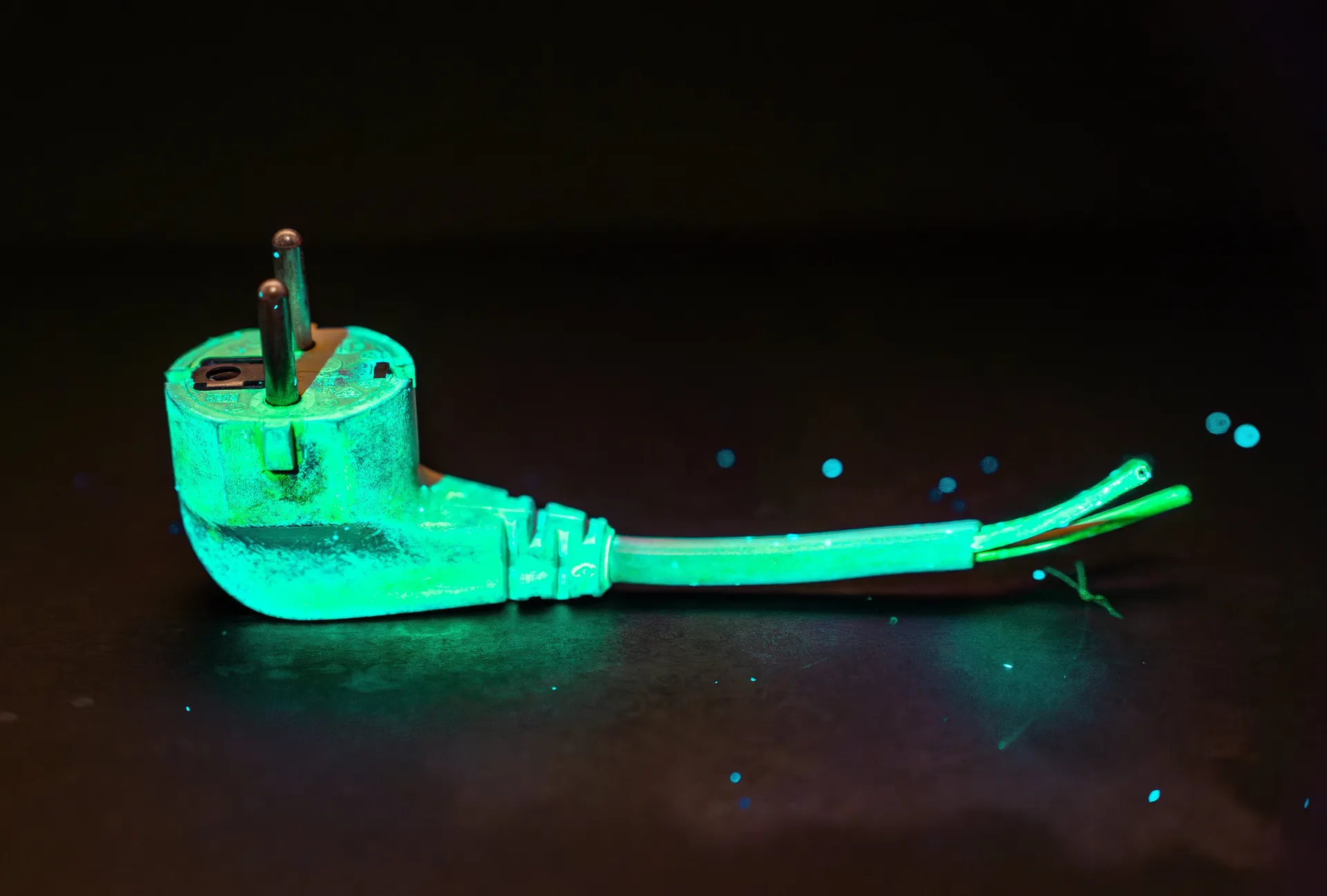Spray-on detector makes Lead light up green
Chemical reacts with Lead instantly to form fluorescent perovskite
Lead contamination and exposure can cause “ profound and permanent ” impacts, including brain damage in children, and increased risk of kidney damage, cardiovascular disease, and miscarriage, according to the World Health Organization. While known contamination is relatively easy to mitigate, the detection itself can be a tricky proposition. Standard methods can only detect Lead if it’s isolated and concentrated first.
Everyday items, with a result in seconds.
Now, researchers at Amolf, a research institute dedicated to studying the physics of matter, have developed a spray-on reagent that signals the presence of even tiny amounts of Lead by lighting up fluorescent green under a UV light within seconds. Comprised of methyl ammonium bromide in isopropanol, it reacts with Lead to form a photoluminescent Lead bromide perovskite (Environ. Sci. Technol. 2023, DOI: 10.1021/acs.est.3c06058).
“We can even spot nanograms of Lead in laboratory conditions”
Gabriel Filippelli, a biogeochemist at Indiana University-Purdue University Indianapolis, who wasn’t involved in study but did test a beta version of the spray, says that it is both sensitive, quick, and accurate, detecting Lead in a way that is obvious to the eye. According to the researchers, the reagent does not react with similar metals like tin or copper, and it can detect Lead on glass, plastic, concrete, soil, metal, paint, and more. “We can [even] spot nanograms of Lead in laboratory conditions,” says Wim Noorduin, the Lead author of the study. The color emitted by the perovskite depends on the halide; bromide causes it to appear green.
The versatile Lead Detection with surprising Origins
“What’s special about our [test] is that we . . . just do it in the environment,” Noorduin says. In fact, the researchers were surprised by the versatility and robustness of the reaction, which detects Lead in different oxidation states and with different counter ions. The researchers spent two years developing the reagent, but for a different use—to make perovskites from the calcium carbonate in the shell of creatures like sea urchins. They discovered its potential as a Lead detector by accident, when Noorduin took it home and happened to spray it on his neighbors’ roof.
Read the full article on cen.acs.org









